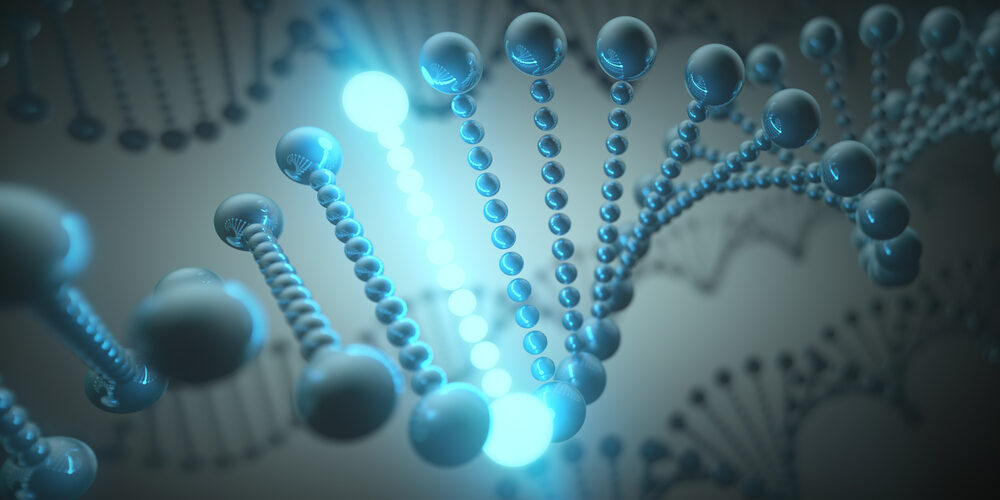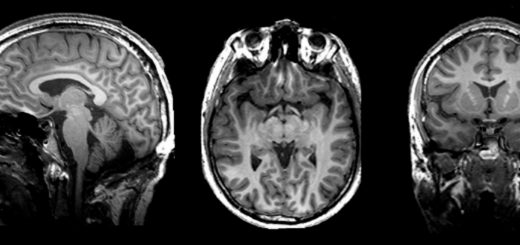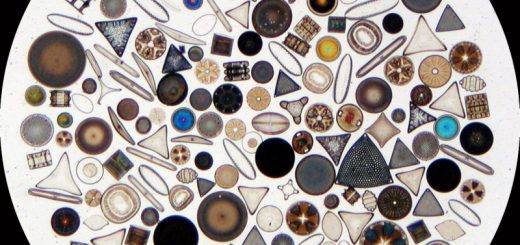Epigenetics and Evolution: Revising the Theory

Epigenetics is the study of changes to the structure of DNA molecules that alter the expression of genes. These changes to the structure are called epigenetic marks, and they differ from mutations in that the actual sequence of a gene remains unchanged. These marks occur naturally and regularly, but can also be influenced by age, lifestyle and environment.
As a subject, epigenetics is now reaching the age where it is nearly too old to be considered at the forefront of science. Its role in oncogenesis (the formation of tumours) is becoming better understood each day. Every hour that passes, epigenetics appears to be transforming into something mundane and less recognisable as a new frontier in research, or something that represents a fundamental re-understanding of the biological laws of life. That’s not to say that geneticists consider epigenetics boring – far from it in fact. Epigenetics has been the cause of rifts and controversies in the genetics community for almost as long as it has been researched.
Well, I hear you ask, if something is the cause of a lot of arguments how can it be becoming just another footnote? Simply put, there is not enough discussion around the truly controversial aspect of epigenetics: what role it has played in the evolution of life. My suggestion that the focus of epigenetic research should shift more towards the role the process may have played in evolution is not aimed at discounting the role it has played in better understanding the development of tumours and cancers. However epigenetic modifications to DNA and gene expression from the moment of their discovery carried within their research the possibility of something both terrifying and exciting: disproving Darwin.
Saying that the theory of evolution might be being shaken does not mean that survival of the fittest is no longer true. Instead, where the challenge to the theory comes from is the apparent ability of acquired epigenetic marks to be inherited and thus alter the gene expression of an individual’s offspring. The common defence against this argument is that while epigenetic influences on gene expression can be intergenerational they are ultimately transient. An epigenetic mark may be passed on to an individual’s children and even grandchildren, but very few of these epigenetic changes survive more than two generations. This is mainly due to events during gamete (sperm and egg cells) formation where most – but not all – epigenetic marks are lost, meaning that after multiple generations the chance of a single epigenetic mark surviving is negligible, but not impossible 1.
Interestingly, the biggest spanner in the works to the argument that epigenetic marks’ short timespans means they do not influence evolution to a great extent comes from our own evolutionary history. Many genes are common throughout all life forms, but a species that we have an exceptionally high number of common genes with is chimpanzees. In fact, so much of our genome is so similar that we struggle to explain when, and more importantly why we became different species 2. One possible explanation for why so little of a difference in the genome between humans and chimps resulted in such a stark contrast is the silencing of certain critical genes. For example, we already know that epigenetic silencing of genes is largely responsible for the variation we see in humans: we can be tall or short, handsome or ugly, strong or weak and can all have different skin, eye and hair colours. This is an unexpected level of diversity in a species which is incredibly inbred 3. I know, I didn’t feel great reading that either. Epigenetics compensates for the relative lack of genetic diversity in our species by modulating the function of important genes that code for a type of protein called Transcription Factors 4. Transcription factors are proteins that regulate the expression of genes, sometimes even including the gene responsible for its own expression. They do this by interacting with the control regions of genes to either promote or suppress expression under different circumstances and can exert simultaneous control over multiple genes that are unrelated in function. As a result, the interaction of a transcription factor with a gene is dependent on the gene’s epigenetic mark in its control region, and this can result in a range of phenotypes in an individual. This explanation is, however, much simplified, neglecting the deeply interwoven relationships between individual transcription factors, which mean that a single transcription factor becoming non-functioning can be like removing a single gear from an impossibly complicated clockwork mechanism.
This characteristic pattern of epigenetic marks that encourages diversity in a species that is very genetically similar is also present between humans and our closest cousins. The vast majority of epigenetic marks that differentiate us from chimps appear to be around the control regions of genes and Transcription factors 5. Much in the same way that epigenetics compensate for the lack of variation in our own species, which is not completely explained away by genetic variation, so to does epigenetic differences explain the the vast contrasts between our species and chimps despite our strikingly similar genome
The final evidence that epigenetics constitutes something that will, in enough time, perhaps change our understanding of evolution is again something brought up by the evolutionary history of our own species, Human Accelerated Regions or HARs 6.
HARs are regions of the human genome that rapidly mutated and differentiated from our ancestor’s genome around the time of the emergence of our species 7. This rapid change in the genetic structure of a species is something extremely unusual and something that has been difficult to explain by geneticists for decades. This has also been the cause of many pseudoscientific theories about our origins along the lines of Ancient Aliens (which I would recommend watching drunk or not at all) but in recent years epigenetics has emerged with a possible explanation that doesn’t lend itself to science fiction. A recent study suggested that epigenetic marks forming around the genes contained within HARs could have acted as a harbinger for these genetic changes that led on to differentiate us from our ancestors 8. It should be noted that this is not widely accepted across the genetic community; however, this fringe theory is one of the few possible explanations of this mysterious unanswered event in our evolutionary history that doesn’t wander into tinfoil hat territory.
To summarize, epigenetic changes to the human genome and that of our ancestor species were instrumental in the changes leading to our evolutionary origins. Recent studies are showing that these changes are longer-lasting in certain cases than we first assumed, and after enough years of research we may one day have to modify the theory of evolution to account for the impacts that acquired traits have on a species. While this doesn’t sound as awe-inspiring as disproving Darwin completely and replacing evolution as the crowning achievement of biology, this represents nothing less than a fundamental re-understanding of life on Earth and exactly how we came to be.
This article was specialist edited by Bhoomi Gor and copy edited by Mary Kristen Layne.
References
- ‘The epigenetic side of human adaptation: hypotheses, evidences and theories’, Cristina Giuliani, Maria Giulia Bacalini, Marco Sazzini, Chiara Pirazzini, Claudio Franceschi, Paolo Garagnani, Donata Luiselli, Ann Hum. Biol, 2015; 42(1): 1–9
- Genetic evidence for complex speciation of humans and chimpanzees, Nick Patterson, Daniel J. Richter, Sante Gnerre, Eric S. Lander and David Reich, Nature, 2006; 441: 1103-1108
- The Distribution of Human Genetic Diversity: A Comparison of Mitochondrial, Autosomal, and Y-Chromosome Data, L.B. Jorde , W.S. Watkins, M.J. Bamshad, M.E. Dixon, C.E. Ricker, M.T. Seielstad, M.A. Batzer, The American Journal of Human Genetics, 2000; 66(3): 979–988
- DNA methylation contributes to natural human variation, Holger Heyn, Sebastian Moran, Irene Hernando-Herraez, Sergi Sayols, Antonio Gomez, Juan Sandoval, Dave Monk, Kenichiro Hata, Tomas Marques-Bonet, Liewei Wang, and Manel Esteller, Genome Res. 2013, 23(9), 1363–1372.
- The interplay between DNA methylation and sequence divergence in recent human evolution, Nucl. Acids Res. Irene Hernando-Herraez, Holger Heyn, Marcos Fernandez-Callejo, Enrique Vidal, Hugo Fernandez-Bellon, Javier Prado-Martinez, Andrew J. Sharp, Manel Esteller, and Tomas Marques-Bonet, 2015, 43 (17), 8204-8214
- Exploring the genesis and functions of Human Accelerated Regions sheds light on their role in human evolution, Melissa J Hubisz, Katherine S Pollard, Current Opinion in Genetics & Development, 29, 2014, 15–21
- Exploring the genesis and functions of Human Accelerated Regions sheds light on their role in human evolution, Melissa J Hubisz, Katherine S Pollard, Current Opinion in Genetics & Development, 29, 2014, 15–21
- Exploring the genesis and functions of Human Accelerated Regions sheds light on their role in human evolution, Melissa J Hubisz, Katherine S Pollard, Current Opinion in Genetics & Development, 29, 2014, 15–21











2 Responses
[…] [2] – Epigenetics and Evolution: Revising the Theory by Alex Osborne · July 31, 2016: https://the-gist.org/2016/07/epigenetics-and-evolution-revising-the-theory/ […]
[…] Epigenetics and Evolution: Revising the Theory by Alex Osborne · July 31, 2016:https://the-gist.org/2016/07/epigenetics-and-evolution-revising-the-theory/ […]